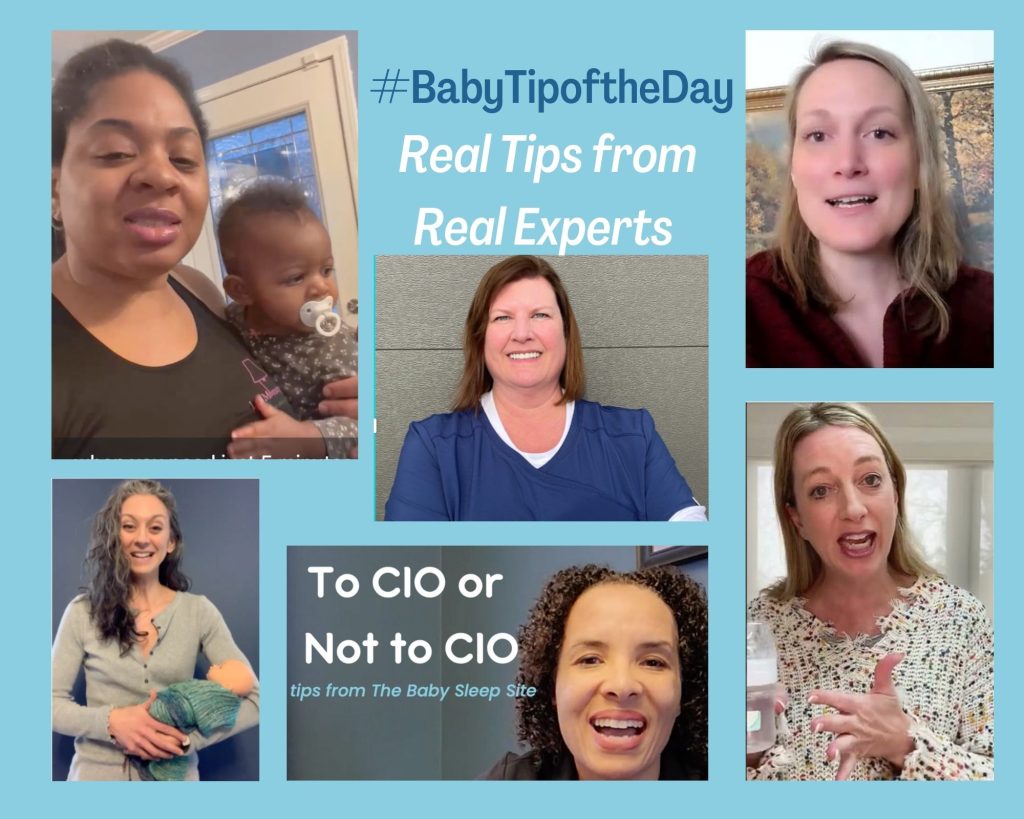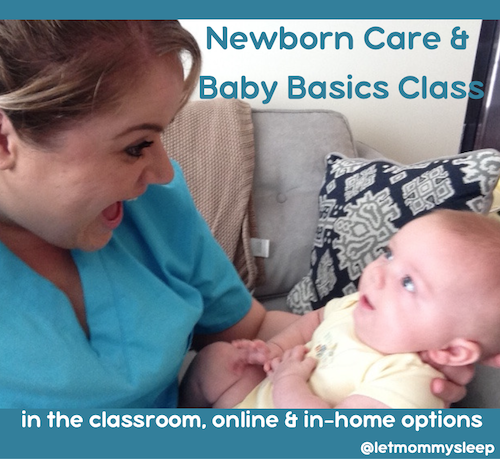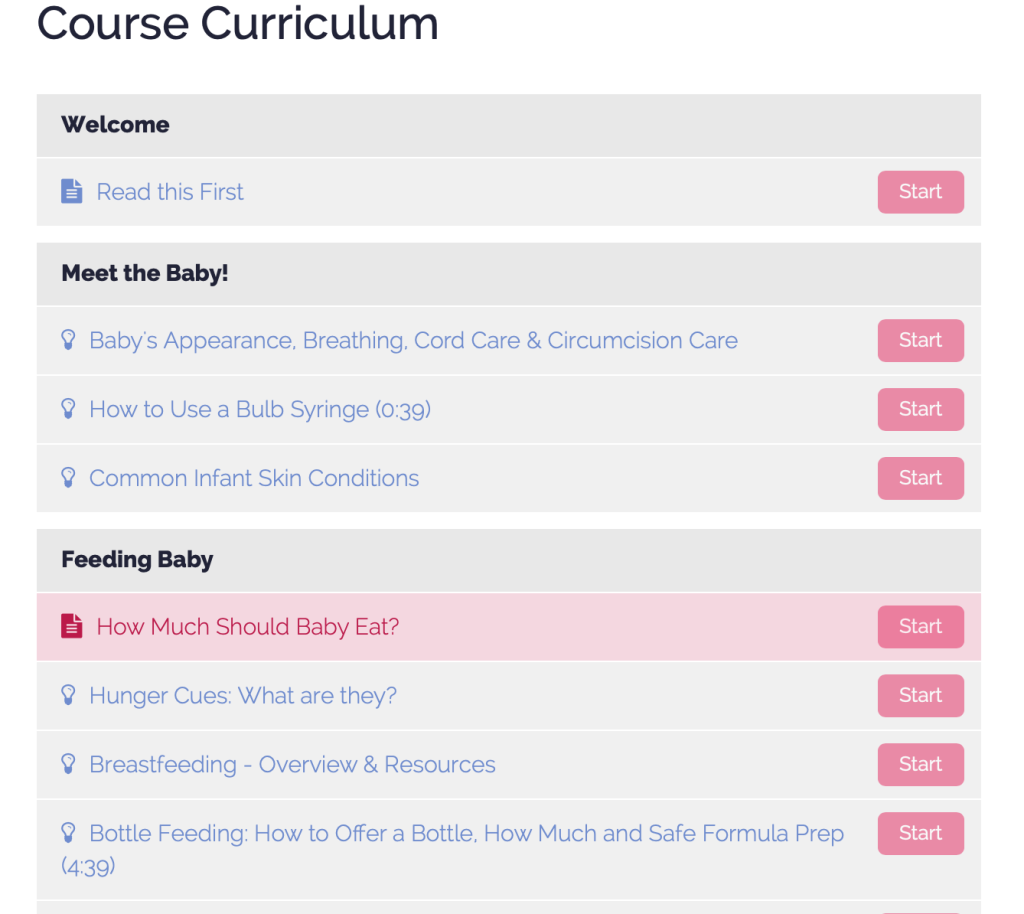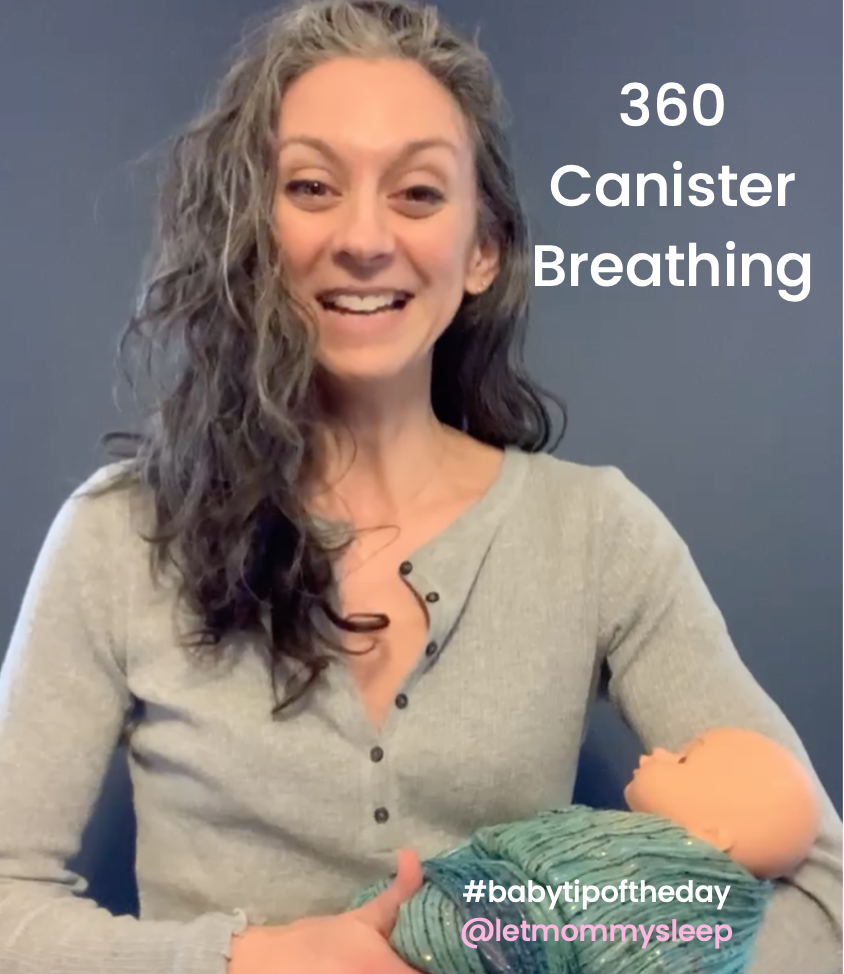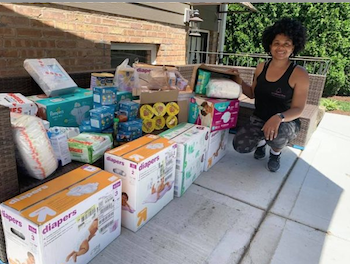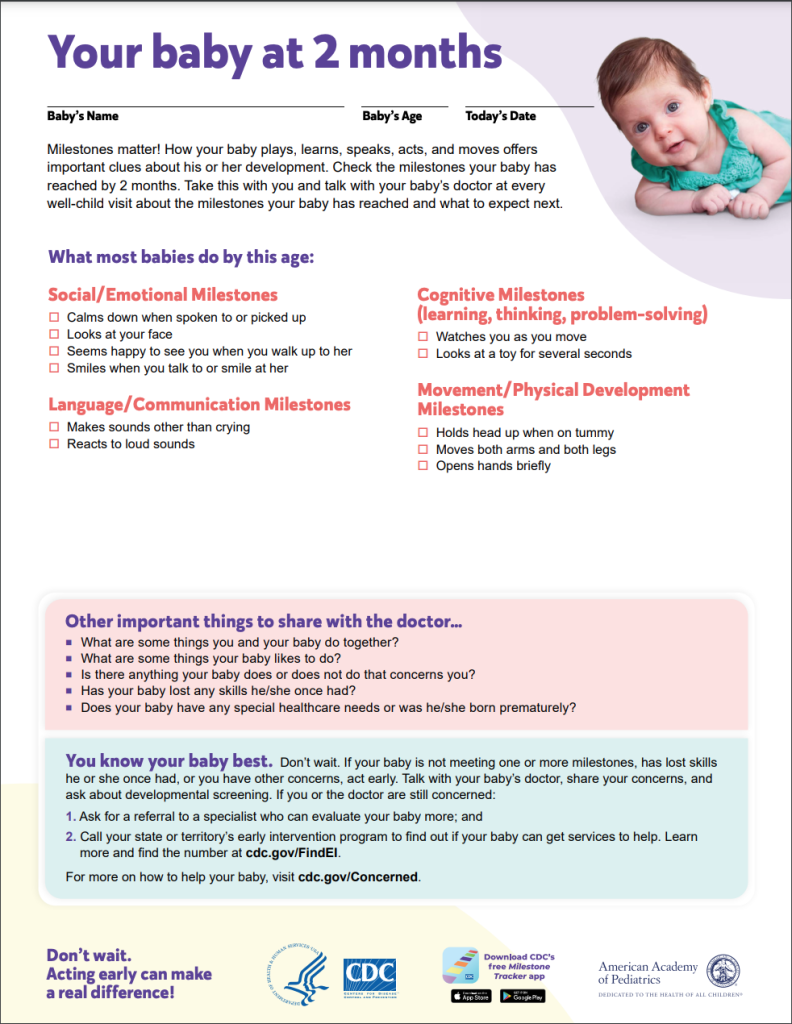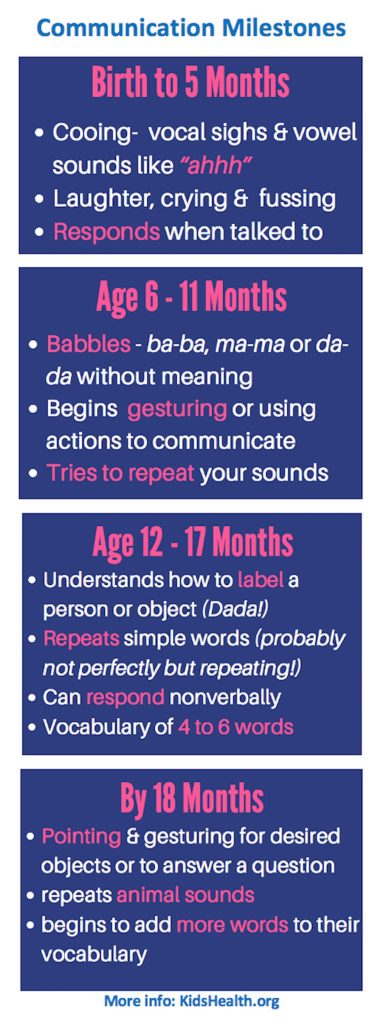We’re posting one tip per day on social media so expecting and new parents don’t get information overload! We hope you enjoy Baby Tip of the Day! Experts, you can always send your tips and videos to us too!
What’s Baby Tip of the Day: 2022 – 2023 Edition!
Same concept, one piece of tangible advice every day to make your life easier. What’s different is the inclusion of updated guidelines that have changed since 2020, COVID19 info and even more expert contributors. Our team has provided over 2 million hours of newborn care and education. We’ve shared a LOT of advice during that time, but we’ve also received education about babies, pregnancy and postpartum health. Community leaders, pediatricians, subject matter experts and mental health professionals have all contributed to this project. We’ll detail everyones contributions on social media and here on the blog.
So, every day you’ll see a helpful, actionable tip from our community of experts. Sleep, baby care and the vital subjects you expect to see will be included but less obvious topics such as estate planning, postpartum sexual health and newborn photography will also be shared.
Here’s an example:
The Dreamfeed- In this video, RN Noelle explains how to actually do this later night feed and how “dreamfeeding” can benefit your baby and family. After watching this tip a viewer will be in expert too!
Our goal is the same as it always is- to provide evidence-based advice on the care of newborns and postpartum parents. We’ll post all the tips below and you can follow #BabyTipoftheDay on your social media of choice; Instagram, YouTube, Facebook or Pinterest.

All the Baby Tips of the Day:
Week 1: News & FAQS – These are based on 2022’s recently updated baby care recommendations.
- 2/14/22 – Milestones Have Been Updated! : The CDC’s Milestone Tracker – This App keeps track of development from age 2 mos-5 yrs with descriptions of each milestone. Especially good for parents of twins.
- 2/15/22 – COVID Vax: – Yes, you should get vaccinated if breastfeeding. Here’s a list of data supported studies supporting the recommendation.
- 2/16/2022 – How to Swaddle: How to Swaddle like a pro!
- 2/17/2022 – SaferProducts.gov – Just because they sell it, doesn’t mean it’s safe. Beginning in mid-2022, any product marketed for infant sleep must meet a federal safety standard. Til then check out SaferProducts.gov if you’re not sure if your product is safe or not. All the details here: CPSC Incline Sleeper Ban.
- 2/18/2022 – Sleep Schedule with your Partner – Split the night: the safe way for everyone to get more sleep.
Week 2: Postpartum Mental & Physical Health
- 2/21/2022 – Affirmations for brand new parents from noted pediatrician Dr. Molly O’Shea.
- 2/22/2022 – PPD & Baby Blues: Know the Difference . Crucial info for new parents and those who love them.
- 2/23/2022 – Diastasis Recti – strengthen your core using 360 Canister Breathing
- 2/24/2022 – Fights that Happen b/t 11p-6a don’t count! – Sleep deprivation will strain you and your partner’s relationship.
- 2/25/2022 – 4:7:8 breathing and more tips for YOU to sleep if anxiety is keeping you awake.
- 2/26/2022 – Dads and Depression: Look out for postpartum depression signs in non-birthing partners too because it affects 1 in 10 partners.

Week 3: Tips for Your First Week Home
- 2/28/2022 – Baby’s First Bath
- 3/1/2022- If you’re nursing and it seems like baby is “always on you,” you’re doing it right!
- 3/2/2022 – Newborns DO breathe differently, however don’t let it worry you because it’s normal for them to have staggered breathing.
- 3/3/2022 – Newborn sleep in the first few weeks is erratic…the schedule is that there is no schedule.
- 3/4/2022 – Babies need lots of opportunities to burp…here are 2 burping techniques.
Week 4: Baby Sleep Training
- 3/7/2022 – Sample Infant Sleep Schedules for 4-6 months 5-6 months and 10-11 months
- 3/8/2022 – Baby Kryptonite! Easy technique to calm baby via ThePeacefulSleeper.com
- 3/9/2022 – Do’s and Don’ts of Cry it Out so you can figure out what’s right for your family.
- 3/10/2022 – The Dreamfeed is one last feed before you go to bed, ensuring that baby is sleeping when you are.
- 3/11/2022 – The degree of incline is the reason carseats are used but incline sleepers are banned. Learn more: carseats vs incline sleepers
Week 5: Twins & Multiple Kids
- 3/14/22 – Self-care is great, but did you know it should actually be scheduled to be even more beneficial?
- 3/15/22 – If you’re like most parents you have a lot of stuff in the front seat, so be sure to secure your phone, water bottle and other items…they can become projectiles in the car.
- 3/16/22 – Tupperware of water + tear free soap + sponge = easy sensory activity for toddlers!
- 3/17/22 – Make sure to have toys siblings can play with safely together: books, cardboard blocks, Magic mats and more!
- 3/18/22- Nope, twins shouldn’t share a crib but you sure can push their cribs together!
Week 6: Everyday Life Tips
- 3/21/22 – Stay Organized: Washable labels for bottles keep breastmilk dated and organized.
- 3/22/22 – No Clock Nursing: Chart to ensure baby is eating enough while still allowing natural eat/sleep patterns to emerge.
- 3/23/22 – 12 Infant Soothing Techniques
- 3/24/22 – Keep Baby Monitor Apps secure by using difficult passwords, use the firewall and don’t use the default admin account.
- 3/25/22 – Wondering when to go to the pediatric dentist? Visit the dentist by age 1 or after the first tooth erupts!
Week 7: Be Prepared
- 3/28/2022 – Did you know you can start a 529 college fund before baby arrives? Do it before you get overwhelmed with everyday tasks You can also accept gifts into the fund!
- 3/29/2022- Be ready for poison emergencies by downloading the Poison Control app, bookmarking the site and saving the number in your contacts. Make sure grandparents and babysitters do it before caring for baby too!
- 3/30/2022 – Prepare your pup for baby by letting them meet other babies and kids, having them get used to new furniture and smells and carving out alone time for them each day. More here!
- 3/31/2022- Secure furniture and televisions *before* baby arrives to prevent tip-overs because babies will start “grabbing” way before they start walking. Here’s how.
- 4/1/2022 – Don’t forget baby gear in your emergency preps. How to make a 72 hour emergency bag for infants
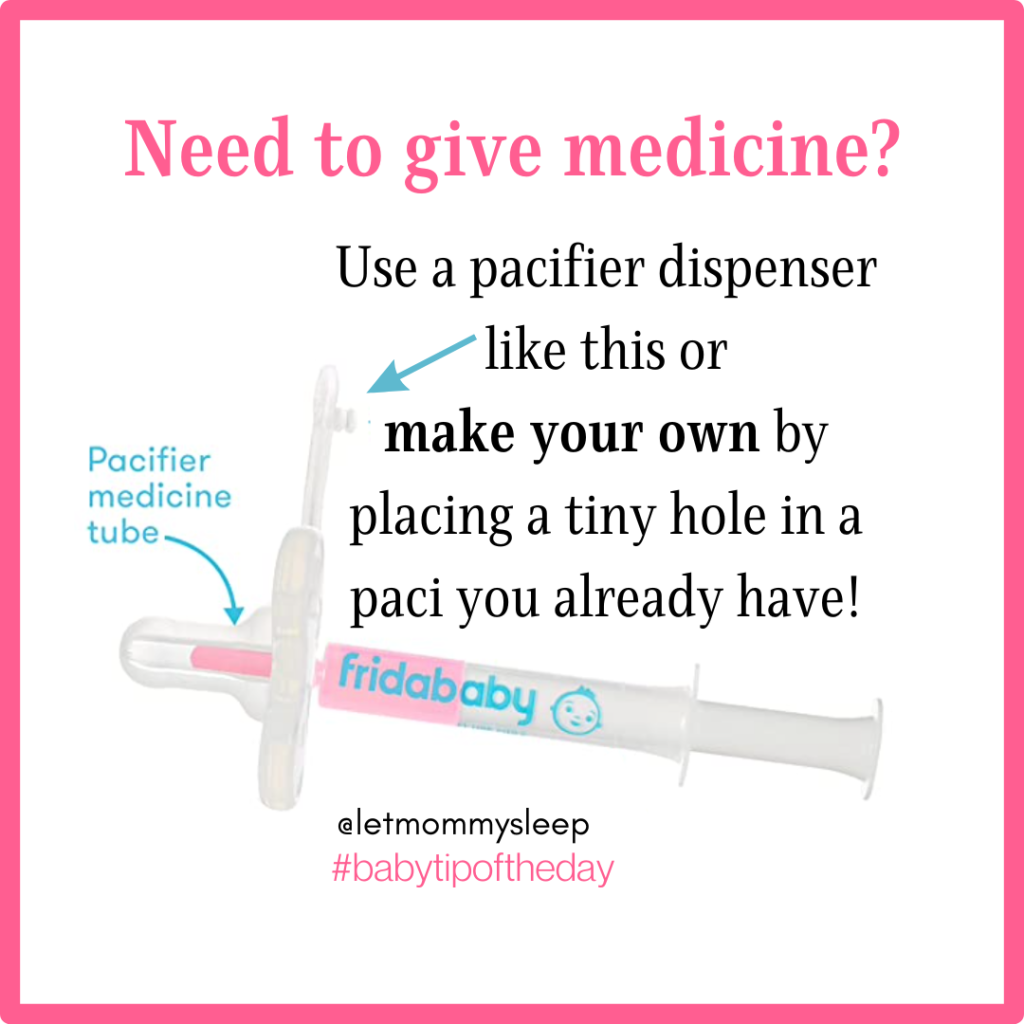
Weeks 8 & 9: Did you know?
- For a more comfortable tummy-time, let baby’s chest rest on a rolled-up towel.
- Car seat laws were recently updated. Look yours up by state.
- You can download a Water Watcher tag so there is a designated adult who supervises kids while swimming.
- You can grow your own veggies using the scraps from your kitchen!
- When getting breastfeeding established, have adults whose job is to make sure *you* have good food, water and clean clothes because *your* job is feeding baby!
- Cradle cap is common and resolves on its own.
- Weaning baby from the breast should not happen cold turkey! You physical and mental health will thank you!
- A baby can have a beautiful latch and still have tongue tie.
- Is your baby trying to roll over? If so, it’s time to stop swaddling.You can “wean” the swaddle by allowing one arm out for a few nights, and then both arms!
